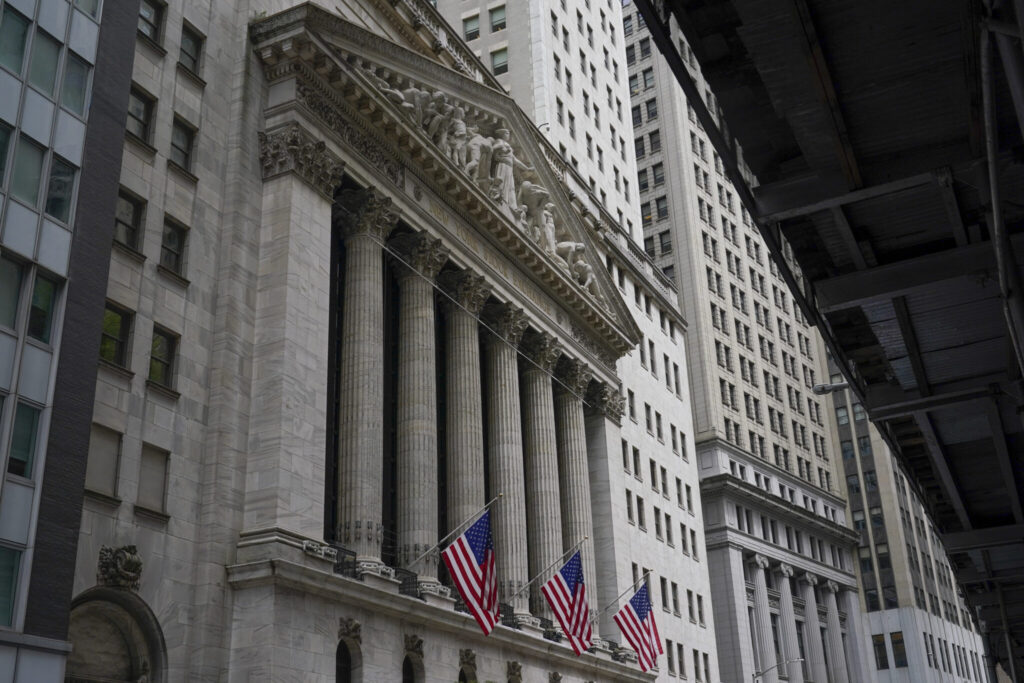U.S. stock index futures were stable in trading on Wednesday after Wall Street posted its worst performance of the year a day earlier as investors treaded cautiously ahead of the minutes from the Federal Reserve’s latest rate-setting meeting. The main indexes shed more than 2% on Tuesday as investors interpreted a rebound in U.S. business activity in February to mean interest rates will need to stay higher for longer to control inflation. The Associated Press has the story:
Wall Street futures rise after worst 2023 selloff
Newslooks- NEW YORK (AP)
Wall Street pointed toward gains early Wednesday as markets await the release of minutes from the Federal Reserve’s last meeting, a day after the worst selloff of 2023.
Futures for the Dow Jones industrials rose 0.2% and the S&P 500 gained 0.3% before the opening bell.
The S&P 500 fell 2% on Tuesday in its sharpest drop since December and the Dow lost 2.1%, wiping out all of its gains this year. The Nasdaq composite sank 2.5% as worries persist about higher interest rates and their tightening squeeze on the global economy.
Bond yields have shot higher this month as Wall Street raised its forecasts for how high the Federal Reserve will take short-term interest rates in its efforts to stamp out inflation. The Fed has already pulled its key overnight rate up to a range of 4.50% to 4.75%, up from basically zero at the start of last year.
The yield on the 10-year Treasury, which helps set rates for mortgages and other important loans, leaped further to 3.95%. The two-year yield, which moves more on expectations for the Fed, came back down to 4.67% from 4.72% earlier, close to its highest level since 2007.
Investors and economists will scour today’s minutes release from the Fed’s last meeting for clues about where the central bank’s policy might be heading this year.
The worry is that the Fed could ratchet up its forecasts for rates further next month when it releases its latest projections for the economy. Recent reports have also suggested inflation is not cooling as quickly and as smoothly as hoped, moving Investors to push back their forecasts for when the first rate cuts could happen.
Higher rates hurt investment prices and raise the risk of a recession by slowing business investment and consumer spending.
U.S. employment and consumer spending have weathered higher interest rates well, but a report Tuesday showed sales of previously occupied homes slowed to their slowest pace in more than a decade. The mixed signals leave investors wondering if the Fed will ease back on rate hikes or resume a more aggressive stance.
“Amid the evolving new narrative of stronger U.S. growth, payrolls, retail sales, and the additional Fed response required to tame the rude health of the U.S. economy, investors are beginning to think the hawkish Fed may not have entirely run its course yet,” Stephen Innes of SPI Asset Management said in a commentary.
In Europe, Britain’s FTSE 100 lost 0.9% by midday, France’s CAC 40 slipped 0.5% and Germany’s DAX fell 0.3%.
In Asian trading, Tokyo’s benchmark Nikkei 225 dipped 1.3% to finish at 27,104.32. Australia’s S&P/ASX 200 slipped 0.3% to 7,314.50. South Korea’s Kospi dropped 1.7% to 2,417.68. Hong Kong’s Hang Seng slipped 0.5% to 20,423.84, while the Shanghai Composite shed 0.5% to 3,291.15.
New Zealand’s central bank raised its benchmark interest rate by a half-point to 4.75% to try to wrestle down inflation. The increase, which can raise the borrowing costs for consumers on everything from credit cards to mortgages, comes despite widespread economic pain from a devastating cyclone.
In other trading Wednesday, benchmark U.S. crude lost 39 cents to $75.97 a barrel in electronic trading on the New York Mercantile Exchange. Brent crude, the international pricing standard, fell 34 cents to $82.43 a barrel.
The U.S. dollar fell to 134.48 Japanese yen from 134.98 yen. The euro inched back to $1.0643 from $1.0653.







